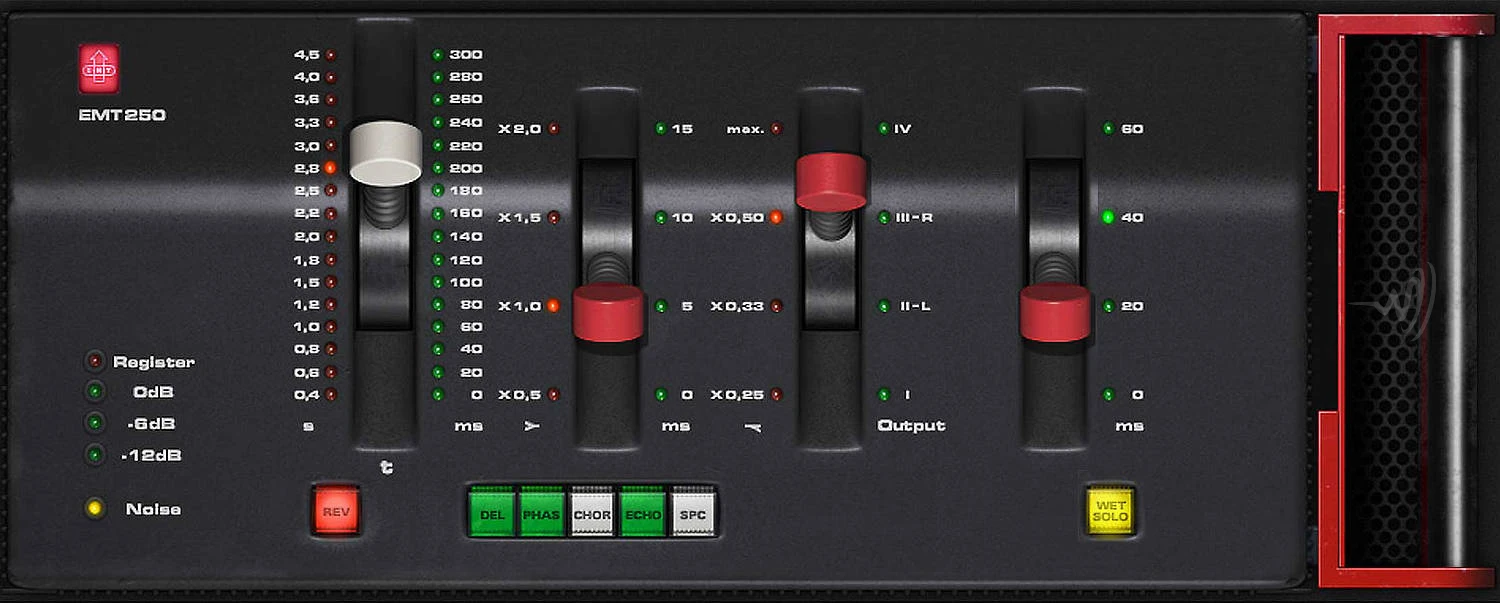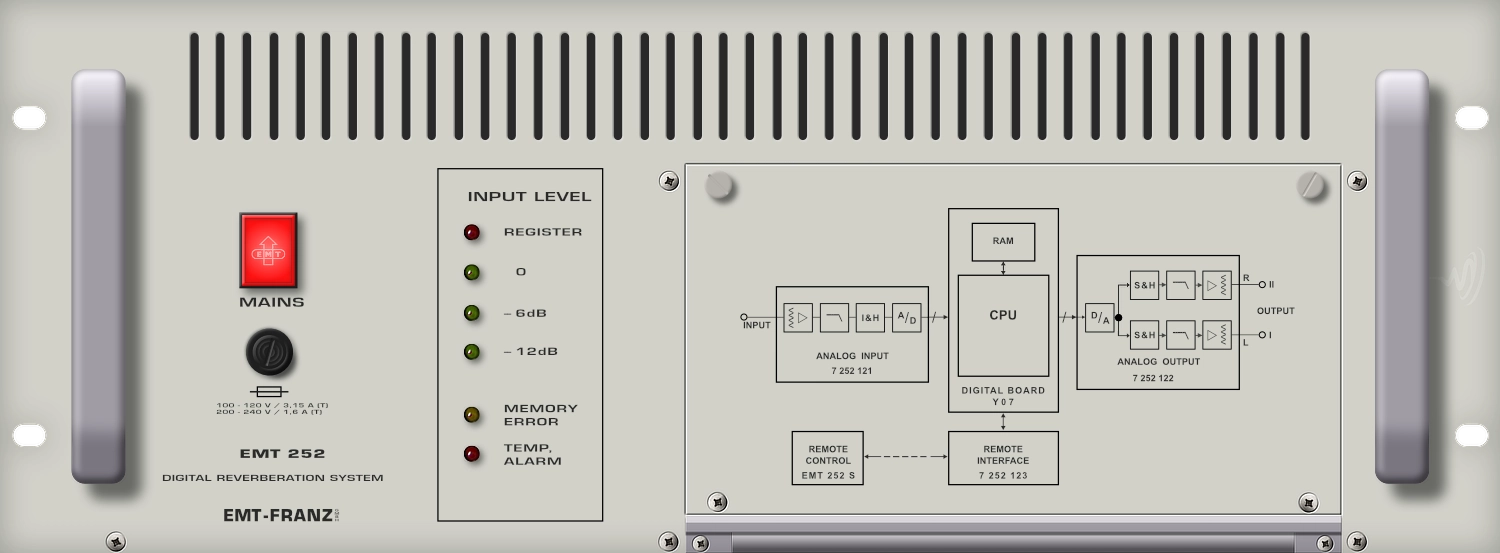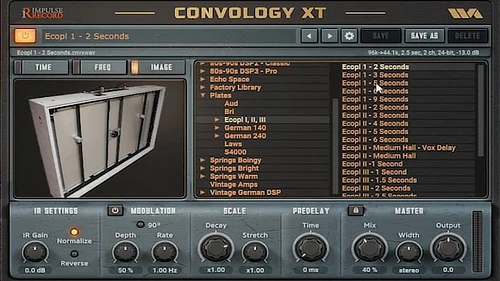The EMT 250 Digital Reverb holds a place of remarkable significance in the history of audio engineering and music production. Released in 1976 by EMT (Elektromesstechnik), a German company renowned for its groundbreaking audio technology, the EMT 250 was the first commercially available digital reverb unit. Its introduction marked a pivotal shift from analogue to digital processing in the audio industry, laying the foundation for future developments in digital effects processing.
Prior to the EMT 250, reverb effects were primarily achieved through mechanical means, such as plate and spring reverbs, which had limitations in terms of size, maintenance, and versatility. The EMT 250, with its sleek, futuristic design and advanced digital technology, offered unprecedented control and flexibility. It utilised a 12-bit, quasi 15-bit converter with a triple switching quantising ladder and a sampling frequency of 24 kHz, providing a high-quality digital reverb that was both reliable and adjustable.
The EMT 250 quickly became a staple in recording studios around the world. Its ability to produce natural-sounding reverb and other effects like delay, phasing, chorus, and echo made it invaluable to producers and engineers. The unit’s programmability and range of settings allowed for creative experimentation, influencing the sound of numerous iconic albums from the late 1970s and 1980s. It was especially favoured for its ability to create lush, immersive soundscapes that were previously unattainable with analogue equipment.
The EMT 250’s influence extended beyond its technical capabilities. It represented a milestone in the digital revolution, signalling the transition of the audio industry towards digital processing. This shift not only enhanced the quality and consistency of audio production but also paved the way for the development of more sophisticated digital effects and recording techniques. The EMT 250’s legacy is evident in its continued use and reverence among audio professionals, and it remains a symbol of innovation and progress in the field of sound engineering.
Today, the EMT 250 is celebrated as a vintage classic, with original units highly sought after by collectors and studios alike. Its sound and design have inspired numerous emulations and plugins, ensuring that its revolutionary impact on audio processing continues to resonate in modern music production. The EMT 250’s blend of pioneering technology and exceptional audio quality ensures its place in history as a transformative force in the evolution of digital audio effects.
The EMT 250 Digital Reverb uses approximately 500 integrated circuits, 125 K bits stored in RAM and 16 K bits in ROM. Operating speed, 50ns per instruction. All impressive specifications back in 1976, not so much today.

Delay – This program produces four delay channels. Each of the four outputs can be shifted in steps of 5 ms over the complete range from 0 to 315 ms and without affecting any of the other outputs.
Echo – One variable length delay element is feedback in a way such that the output level is reduced by approx. ‘1 dB per circulation of the loop. There is a repetitive signal with decreasing intensity: the slap echo program. The repeating frequency can be varied between approximately 3 Hz (= 315 ms) and 200 Hz (= 5 ms).
Space – The program ‘Space’ is a reverberation program of extremely long reverberation time (about 10 s) and with linear distribution of the reverberation time with frequency.
Because of atmospheric absorption neither exists in nature, and since the program is intended, amongst others, for science fiction productions, it is designated Space (Reverberation in outer Space).
Chorus Effect – The chorus program of the EMT 250 Digital Reverb results from the consideration that the impression of a large music ensemble is brought about by a certain imprecision, referred to a main microphone.
Under the assumption that all musicians of an orchestra are playing absolutely simultaneously, the sound signals originating from each of their positions arrive at the microphone one after the other.
There are continuous variations in pitch and positions of tones relative to one another. These variations, of course, are very minor, but they are present and are necessary to enable a correct musical impression of a large musical ensemble.
Stereo Phasing – The phasing effect originates by means of a small shift in time of two signals to one another and by the comb filter curve which is thereby formed. Changing the delay lime is done by means of a 16-step switch through a low-pass filter.
The speed of the phasing effect, therefore, can be controlled, within a certain framework, through the speed at which the switch is changed. Stereo phasing is a new application allowing interesting, shifts of perceptual location to be achieved.
*The exterior design of the EMT 250 is the copyright of Bermes Design.
























